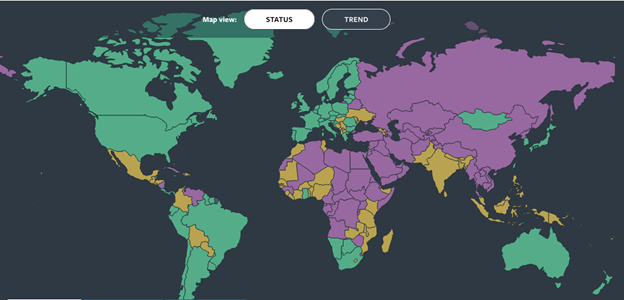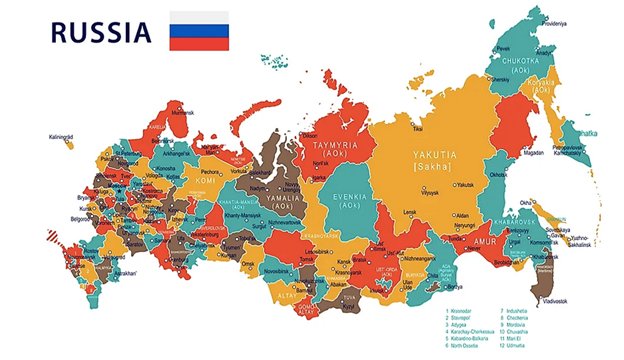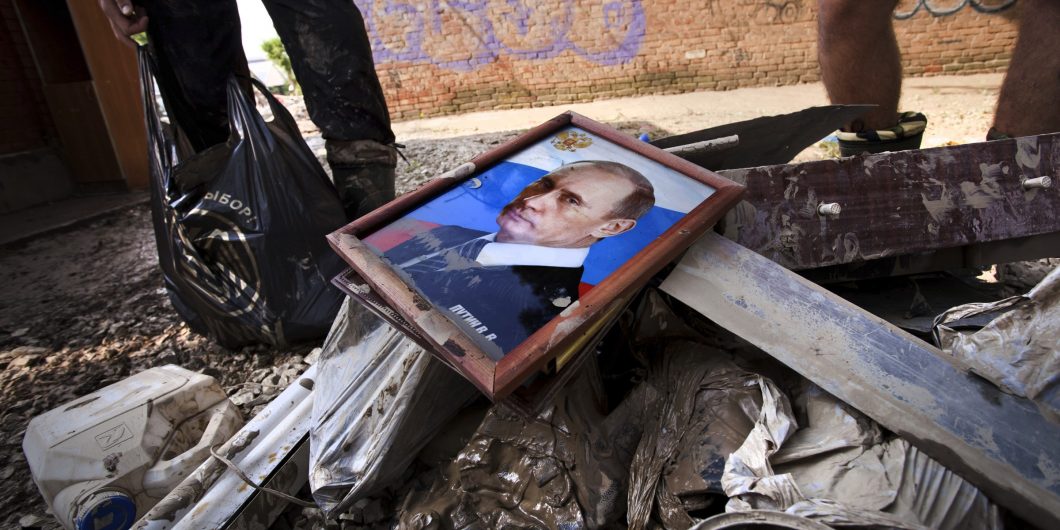Stout Ukrainian defiance has reminded us of the difference between the good and bad sorts of nationalism.
Will the "Ball of Liberty" Roll into Russia?
Thomas Jefferson, writing in 1795 of the revolutions in Holland and France, wrote to Tench Coxe of his growing optimism about the future of liberty:
It proves there is a god in heaven, and that he will not slumber without end on the iniquities of tyrants, or would-be tyrants, as their Stadtholder. This ball of liberty, I believe most piously, is now so well in motion that it will roll round the globe, at least the enlightened part of it, for light & liberty go together.
Today, the unfolding events in Ukraine are, we can hope, an indication of an uncommonly auspicious moment for the flourishing of freedom. The “iniquities of tyrants” are on more violent display than usual, and every fresh missile barrage focuses the enlightened world in a way not seen in generations. Holland and France, having long ago endured their birthing pains of Liberty (after helping us claim ours, don’t forget), are now helping Ukraine to stymie Russian aggression. Not only has this autumn seen a series of setbacks for the would-be tyrant of the Kyivan Rus, but Putin’s failures have opened a major opportunity for the kind of popular uprisings that sent the original Ball of Liberty crashing into the despotisms of Old Europe. It is entirely conceivable, as last year it was not, that some or all of the eighty-five individual republics of the Russian Federation could splinter from Moscow, offering the chance, the chance, for a flowering of freedom there.

On the other hand—and this is something the West might well keep in mind—it all might be a trap. While we eagerly follow Putin’s floundering in Ukraine and deplore his state-sponsored terrorist tactics, there is the real chance that the latest signs of weakness are designed intentionally to provoke our liberty-loving ire. We can be naïve like that—Russians have long smirked into their sleeve about “effeminate western sentimentality.”
How else to explain the civilian-pummeling strategy of rocket and missile attacks with demonstrably little military effectiveness, which serve only to enrage Ukrainians and infuriate the western world? It’s strange, is it not, that nearly every strike is occurring in thickly settled civilian areas conveniently near media outlets? I was reminded of this over and over again while racing about Ukraine on beautiful four-lane freeways with excellent cellular service: it seemed more than a little puzzling that choice targets like transport corridors and cell towers were being bypassed by targeters in Moscow in favor of two or three floors of an apartment complex or some farmer’s hay barn. Sometimes we could barely make it through the convoys of news reporters to help people. Something just didn’t quite add up, and it still doesn’t.
While it would be tempting to chalk up these latest attacks to rank incompetence or even pathological criminality (and it may well be—stranger things have come out of Tsarist psyches), we shouldn’t ignore the possibility that the apparent desperate ineptitude might be more than it seems. It’s very possible the war in Ukraine is a signal back home—a cynical bid to hold a fractious federation together in an ever more centripetal world.
Sergej Sumlenny makes a convincing case that the monolithic “Russia” we envision is on the cusp of a major disintegration. He shows the deep divisions within regions we Westerners have never heard of: Komi, Karelia, Bashkortostan, Tatarstan—places so naturally independent and diverse that they have distinct languages, religions, customs, and their own legislatures, flags, anthems, and even alphabets. Moreover, many of them have a long separatist/nationalist tradition and long-smoldering memories of Russian tyrannies. The keg is charged with powder.

Within the imperialist Russian ranks, there has long been growing concern over this internally-evident fact. Vladimir Shevchenko has written for decades of his worries over dissolution. Among other concerns, he bemoans the “lack of a common purpose” that would unite the widely disparate peoples of the federation. And this—the yen for a grand, nationally unifying project—may be the key to what is happening today. The attack on Ukraine may well have been the cynical land grab it appeared to be. But the backup plan, the “losing plan” if you will, may have always been to draw the West into a direct confrontation that could become the catalyst of unifying sentiment within the federation.
Vladimir Putin, speaking in July last year, railed against the “…deliberate efforts by those forces that have always sought to undermine our unity. The formula they apply has been known from time immemorial—divide and rule. There is nothing new here. Hence the attempts to play on the ‘national question’ and sow discord among people, the overarching goal being to divide and then to pit the parts of a single people against one another.” His abiding concern over fissuring is embodied, for example, in remarks he made over the issue of Caucasus secession:
If this happens, then, at the same moment—not even an hour, but a second—there will be those who want to do the same with other territorial entities of Russia, […] and it will be a tragedy that will affect every citizen of Russia without exception.
In short, the breakup of Russia is the most pressing existential threat imaginable. Putin and his cronies rightfully recognize that this threat is primarily an internal, explosive one, remarks about NATO and “western forces” notwithstanding. And this explains why this latest wave of diabolical attacks, which generate front-page images of craters in playgrounds, may ultimately be a ploy. It is a ploy directed by desperation—the only realistic path to maintain imperial unity is through the creation of an external existential threat: beg, bait, and tempt the West into something that can be plausibly claimed as an external attack, and the ruling tyrants are guaranteed another generation in power. To be sure, this is a highly risky gambit: if Putin overplays his hand he may risk complete annihilation by a technically superior foe. But the gambit might represent the least risky of a number of bad alternatives. Better to go down fighting another Great Patriotic War than go down in history as the one who “lost Mother Russia” to internal dissolution.
All of this, even if only partly correct, is why the current strategy of NATO “reluctance” should continue. Yes, build up Ukrainian air defenses into a parallel “iron dome.” Yes, continue to grind away at occupying forces and reduce the Russian warmaking machine, preferably through the spontaneous voluntary assistance of free individuals. But go no further, whatever the outrage.
Now is a moment to turn the cynical, tyrannical plan on its head: the people of Ukraine, by pluckily defending themselves, have earned the free world’s unwavering moral support. Their spirited resistance has emboldened other freedom-loving peoples around the globe—from Iran to Hong Kong to Myanmar, a sense of the power inherent in collective resistance to tyrannical rule seems to be flowing, not ebbing. Russia has beaten itself against an indefatigable wall of resistance to coercion, opening the widest window in a generation to their cousins within the Russian federation. As the “Ball of Liberty” rolls through Ukraine, however, it’s important we don’t give tyrants any opportunity to derail it.



